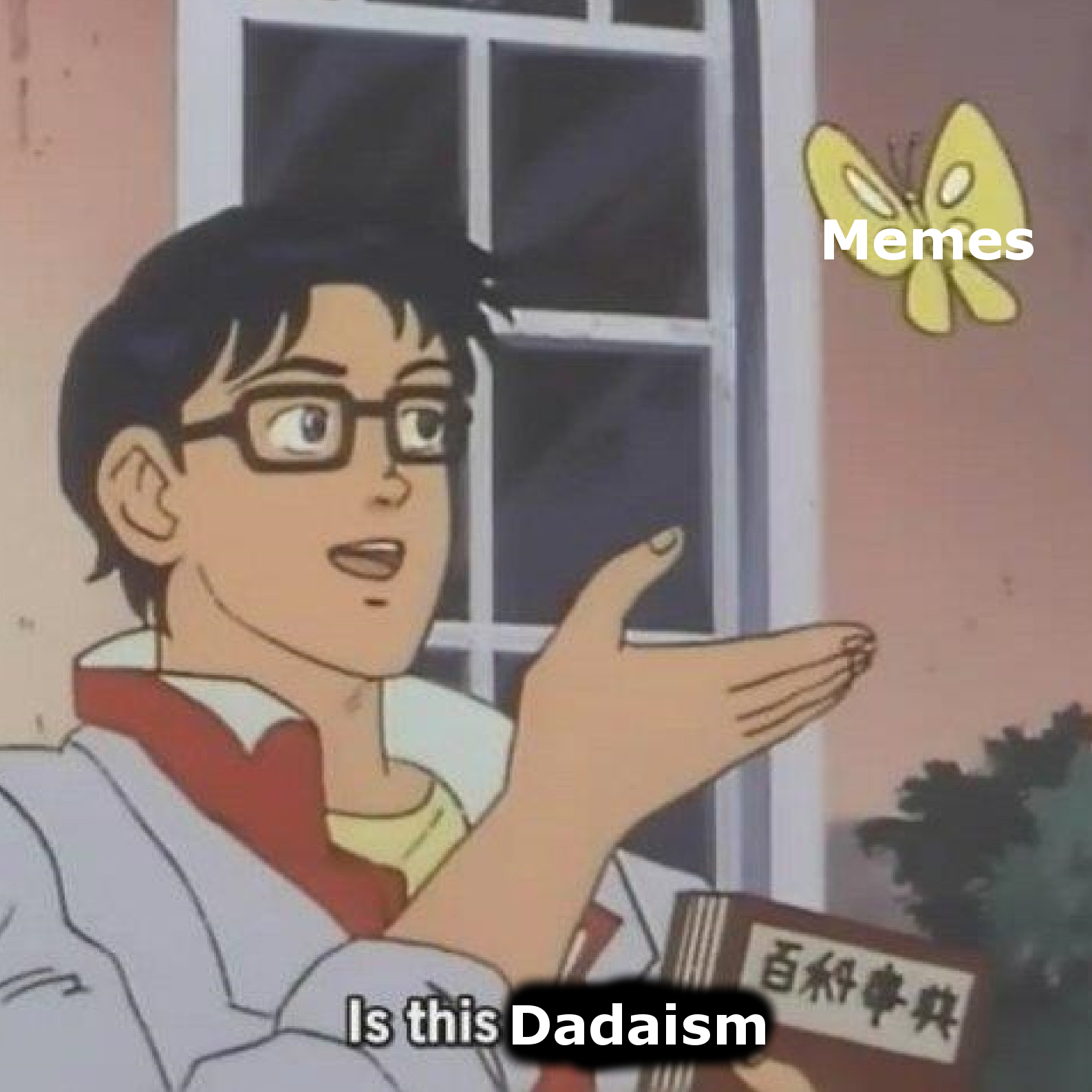The Art of Absurdity: Resurgence of Dadaism through Gen-Z memes.
Digital natives today are being flooded by unnatural amounts of information and content at a rate and quality that has never been seen before. You can find content and information on the nichest of subjects, particularly visual content, and our ability to understand and decode images has increased manifold. In this sea of visual content, memes, particularly Gen-Z memes, occupy a special trench of their own.
Gen-Z memes are infamous for seeming like they have little to no meaning, and look terrible. Unlike most memes, they don’t attempt to be directly funny, and the images and texts often have no connection to each other. All in all, absurd. These characteristics might sound similar to those of dada artwork, from the Dadaist Movement of the early 20th century. Read on as Sakshi Sadashiv explores the cultural and contextual elements that led to each movement, and draw interesting parallels between the two.
Indian Animation: A bubble that burst too soon?
For a lot of Indians, animation starts with manga series like Naruto and Shin Chan (admit it, you still watch it too) while it ends with American animation like Toy Story and Bojack Horseman. Animation from India isn't even a part of this conversation. Indian animation has had a long and (somewhat) illustrious journey through the years.
From the cult classic Ramayana: The Legend of Prince Rama to the forgettable Roadside Romeo, join journalist and traveller Aniket Singh Chauhan as he takes us on a journey through the illustrious highs and disastrous lows of the Indian animation industry.
The Tale of the Polycosmosian - Part 3
In this third and final part, bizarre worlds with bizarre-looking folk are manageable; held at a distance and peered at through the lens of a thick magnifying glass afforded to our protagonist by their polycosmosian travels.
Yet when Ambrose is confronted by an all-too-familiar attitude, they must question what their own motives, and those of the inhabitants of these strange lands, are; for are judgement and justice one and the same?
Read the conclusion of our Polycosmosian tale written and illustrated by Arman Chagla now!
I MOVED MOUNTAINS
Over centuries, poets, travellers and romantics have woven praises of the lure of the remote mountains. And in India, few places offer a better opportunity to immerse oneself in the pristine beauty of the mountains than Ladakh. Nestled in North India and wedged between Pakistan, Tibet and the Xinjiang Uygur Autonomous Region, Ladakh is the wonderland of the Himalayas.
Written by communications specialist, sustainability and mental health advocate Misha Paul, this article is part memoir of a journey few are fortunate to make, part reflection on the changing nature of our relationship with work and ourselves and part ode to the unmanicured terrain, rich tradition and fragile ecosystem of Leh and Ladakh.
The Tale of the Polycosmosian - Part 2
In Part 1, Ambrose, our ennui-ridden and tired embroiderer extraordinaire feels like an island in a sea of listlessness. But when a chance encounter with a stranger opens up a path to adventure to them, they find themselves flung across the universe and through time, far from home.
Now in the allure of a new world, Ambrose is carried away by the tides of friendship and revolution. Yet, should the opportunity present itself; a mirror held up to reality may reflect only the beholder’s perception. There are plots of fire and blood brewing as Ambrose faces their own conceptions; simmering beneath the shadow of an emerald mountain.
Continue the adventure written and illustrated by visual artist, hand-poke tattoo artist, and creative writer Arman Chagla now!
The Tale of the Polycosmosian - Part 1
In the first of many pieces of fiction to be published on the ArtNowThus blog and Probably Relevant newsletter, we bring to you a tale about history, art and identity, written and illustrated by visual artist, hand-poke tattooist and writer - Arman Chagla.
Meet Ambrose, a non-binary embroiderer who has climbed the rungs of the high fashion industry to find themselves at the top; alone and alienated. Yet, this all changes with a chance encounter and the opportunity of a lifetime where they are thrust into an adventure that spans multiple worlds, humanoid races and unfamiliar terrains, and they grapple with what it means to know yourself and the world around you.
Fantasy Films and the Indian Imagination: Recommendations and Ranting
There are a lot of fantasy movies coming up for release in the Indian market. This got me thinking about the several Indian fantasy films I watched growing up that left an indelible imprint on my mind. They had great-ish visuals, well-told stories and hey, the female characters in them were way more than interior decoration! No one talks about these movies when the topic of fantasy comes up. No one mentions that some of them were pretty big hits in their time. No one talks about fantasy as a genre with several time-tested, respectable tropes and a language of its own.
And that realization annoyed me enough to write this article as a sort of Hina’s list of Top 5 Indian Fantasy Films. Read on for some 90's vibes and pop culture filmology to find out if the Indian imagination has what it takes to tell fantastical stories.
Shepherd of Microbes: An interview with Payal Shah
Barely Researched Facts co-host, Shar Nair, dives into stories of fermentation experiments, its impact on local and global food systems, and recommendations of proportions and combinations in “non-recipes” with Payal Shah, self-styled Shepherd of Microbes and founder of Kobo Fermentary for this issue of Probably Relevant.
Since channelling her passion and setting up as a business in 2018, Payal has gained a steady following of first-time fermenters, enthusiasts, lurkers within the small but fervent fermentation community.
Read on for some fascinating insight into the history of fermentation from ancient Egypt to modern Japan as well as a jar of... ants?










